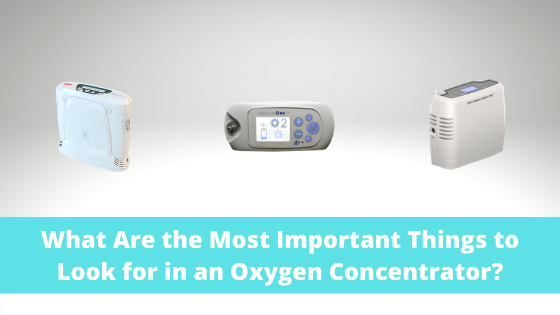
Whether this is your first time in the market for an oxygen machine or you’re looking to upgrade your old, outdated oxygen tank, there’s never been a better time to look into oxygen concentrators. Unlike oxygen tanks which offer very little in the way of options, you may find yourself slightly overwhelmed by everything that concentrators have to offer.
Usually, the best place to start is to simply understand what you want out of an oxygen device. For example, you may want a unit that you can take on a plane with you or on a road trip across the county. Or you might be looking for an oxygen concentrator that’s quiet enough to take to the library or a church service.
Regardless of your preferences, however, there are certain qualities that everyone should look for in an oxygen concentrator. In this post, we’ll discuss the most important things to look for and why. If you have any questions, be sure to address them in the comments section or fill out the contact form at the side of the screen so that one of our respiratory specialists can reach out to you.
{{cta('fa8abc2a-1e88-4fa3-82fd-1cb5b9ed43b2','justifycenter')}}
Backed by a Reputable Brand
Easily one of the most important things to look for in an oxygen concentrator is that it’s backed by a reputable brand. In this day and age, it’s possible for anyone to get online and start selling things. While this may be beneficial if you’re wanting to start a business, it makes it much more difficult for buyers to gauge which sellers are reputable and which ones are not.

When it comes to oxygen concentrators, this issue is amplified. Respiratory patients want to find reliable medical equipment that will meet their oxygen needs, but at the same time, they’re unacquainted with the industry and how it works. This can lead to people investing in untrusted or inexperienced oxygen brands.
Fortunately, there’s a great way to avoid this problem: take the time to research reputable oxygen companies before looking at specific oxygen concentrators. The most respected brands tend to be companies with 5 or more years of experience producing medical equipment like CPAP or BiPAP machines, oxygen equipment, and oxygen accessories. They also tend to have positive reviews from customers on their social media pages and the Better Business Bureau (BBB).

If you don’t want to take the time to research each company, you can reach out to an authorized oxygen reseller like LPT Medical. We have an A+ rating with the BBB and we’re committed to only selling oxygen equipment from the most reputable brands in the industry. In fact, our most popular brand, Inogen Inc. is widely considered to be the best portable oxygen concentrator manufacturing company in the industry.

There are many other great oxygen concentrator companies out there such as AirSep, which is known for creating the lightest portable oxygen concentrator in the world. Respironics, inc. is another well-known oxygen concentrator company that got its start in the 1970s selling CPAP and BiPAP machines.
Oxygen Output
The second most important thing to look for in an oxygen concentrator is its total oxygen output. Unlike oxygen tanks which can be adjusted to any oxygen output that you need, oxygen concentrators are slightly more limited. So, when you’re buying an oxygen concentrator, you need to first make sure that the device is able to maintain your oxygen saturation. The good news is that there is an oxygen concentrator for just about everyone out there, no matter how severely their lungs are impaired.

First and foremost, you should ask your doctor or pulmonologist how many liters or milliliters of oxygen you will need per minute. Also, be sure to ask him/her whether continuous flow or pulse flow would be best. A continuous flow oxygen concentrator works similar to an oxygen tank where oxygen is put out in a constant stream, whereas pulse dose concentrators only put out oxygen when you inhale.

Once this is done, you can start to weed out oxygen concentrators based on whether they meet your needs or not. This can be a difficult process, so it’s best to simply call one of our respiratory specialists who will be able to sort it all out for you and provide you with a list of options that will work best for you.
Portability
Portability refers to how easily a device can be moved around and carried. Oxygen concentrators vary widely in terms of portability because they’re all built differently. Home oxygen concentrators, for example, weigh anywhere from 18 to 50 pounds making them impractical for taking with you outside. They also need to be plugged into an electrical outlet in order to be used. However, they do have wheels on the bottom of them so that you can transport them from one place to another.

Continuous flow portable oxygen concentrators are much more manageable, weighing in around 10 to 20 pounds. This makes them much more practical for taking out of the home with you, and since they don’t need to be plugged into the wall at all times, they will provide you with much more freedom and independence.

Finally, pulse dose portable oxygen concentrators are the lightest and most portable oxygen devices on the planet. Due to additional technology inside these devices, oxygen manufacturers can make them much smaller, lighter, and more manageable all around. The average pulse flow portable oxygen concentrator weighs under 6 pounds making them perfect for carrying on your shoulder or in a backpack.
Battery Life
Battery life is another major factor to consider when you’re purchasing an oxygen concentrator. As you can imagine, battery life varies widely based on the size of the concentrator, delivery type, and the oxygen setting that you’re using. Generally speaking, continuous flow oxygen concentrators have a shorter battery life than pulse flow oxygen concentrators because they put out more oxygen. Also, the higher the oxygen setting you’re using, the less battery life you will have.
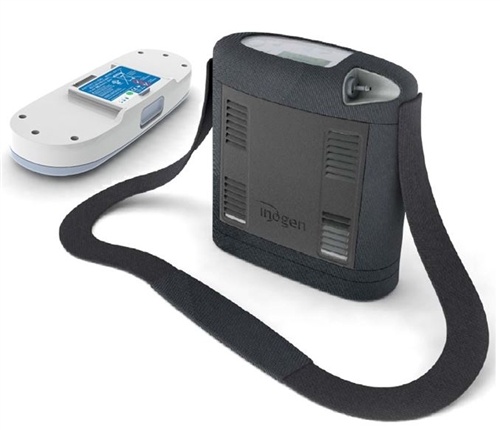
Everyone will have different needs when it comes to battery life. For example, someone who just wants to be able to go to the grocery store or visit a friend may only need a few hours of battery life. Whereas someone who wants to be able to take long flights across the country will need much more battery life.

Your oxygen needs are also an important factor. The double battery for the Inogen One G5, for example, can last up to 13 hours on a flow setting of 1. However, if you need to use a setting of 6, it will last only about 3 hours. If you want to, you can even carry extra fully charged batteries with you wherever you go and simply replace them when they get low.
Ease of Use
One problem that many oxygen patients report about oxygen tanks is that they’re difficult to use. Components can often be fragile or fidgety making it difficult for patients to know whether they’re getting the oxygen they need. What’s more, if something goes wrong with it, it may be difficult or impossible to fix problems on the fly without the help of an expert.
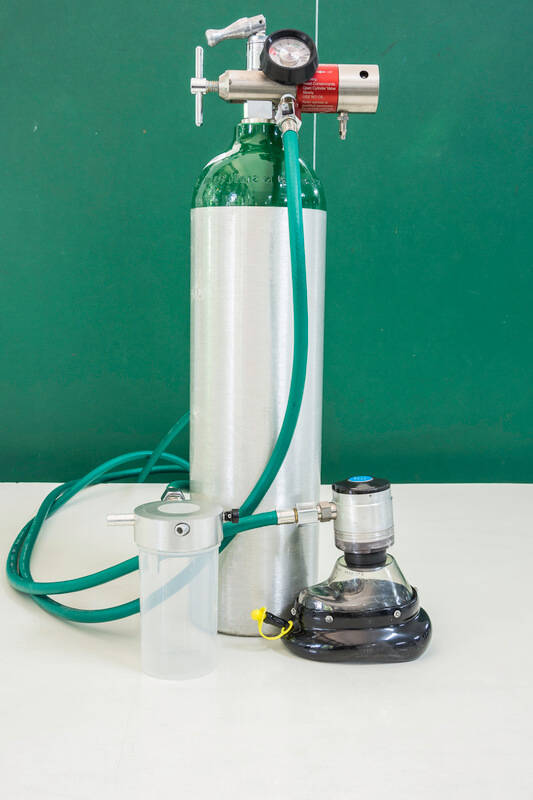
Fortunately, oxygen concentrators are usually not like this. Depending on the oxygen company that you buy from, you can expect your oxygen device to last anywhere between 5 to 7 years with very little maintenance. Most oxygen concentrators have at the very least a 3-year warranty meaning if there are any defects within that time period, you can send it back for free repairs or a full replacement.
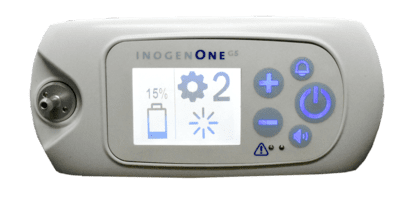
Since oxygen concentrators are electronic devices, you’re going to want to find one that has a simple and easy-to-use interface. The Inogen One G5, for example, only has five buttons on it; two to control the oxygen flow; one to turn the device on or off; one to control the volume; and one to change the alarm settings. This is ideal for people who are always on the go because you never have to hassle with checking the manual constantly to figure out how to operate the device.
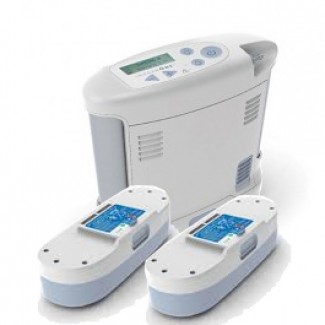
Another thing to look out for when it comes to ease-of-use is the battery. Oxygen generators like the Inogen One G3 and Inogen One G4 have very accessible batteries that can easily be replaced when you’re on the go. However, other concentrators have built-in batteries that can be much more difficult to replace.
Cost
Cost is never an easy subject to discuss when it comes to choosing an oxygen concentrator. On one hand, you want to get a high-quality oxygen device that will last you for years to come, but on the other, you don’t want to break the bank and spend more money than your budget allows. Oxygen concentrators differ from oxygen tanks in that they’re a lot more costly to produce, but in the long run, they can save you a substantial amount of money.
.jpg)
Think about it this way: a standard oxygen tank will only run you a couple of hundred dollars, but you’ll need to pay to have the tank refilled several times a week. This can easily run you hundreds or thousands of dollars a year depending on how much oxygen you use. Alternatively, if you choose to fill your own oxygen tanks, you’ll need a home fill station. These can easily run you $2,000 or more depending on where you buy from.

While oxygen concentrators have higher upfront costs, they more than make up for the cost over years of use. Unlike oxygen tanks, oxygen concentrators don’t need to be refilled. Simply recharge the battery and you’ll have access to oxygen wherever you need it. There isn’t much in the way of short- or long-term maintenance for most oxygen concentrators because they’re built to be durable and hassle-free. It is recommended, however, that you clean the air filters regularly because this will ensure the device is free of dirt and grime that could reduce its lifespan.
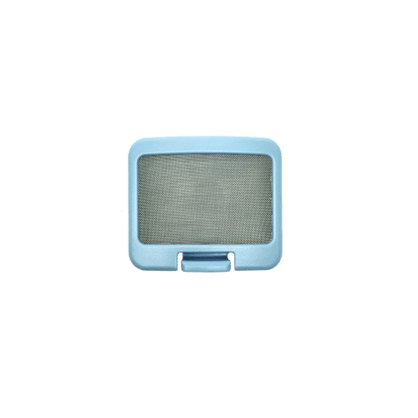
When you decide that oxygen concentrators are the best choice for you, you’ll have several different ways of saving money. First and foremost, you can purchase a used or refurbished oxygen concentrator. Refurbished machines are typically sent back to the manufacturer or a specialized retailer who can check the machine for damage and make repairs.
Another way to save money on an oxygen concentrator is to wait for a sale. This can be a great way to save a couple of hundred dollars on a new or used machine, but it’s important to remember to keep your health top of mind. It’s not worth waiting months or years for the right sale if it means putting your health at risk.

Lastly, some retailers will give you the option to pay for your oxygen concentrator through financing. This is the perfect way to pay for your oxygen device in a more manageable way through monthly installments. The one catch to using financing is that it usually requires a credit check, so if you have bad credit, you’ll need to find a friend or family member who does.
Additional Features
If you’ve taken the time to narrow down your search to several concentrators, it’s time to look into the additional features that the oxygen concentrator offers. By “additional features” we’re referring to things that aren’t necessary but may offer additional convenience or comfort. For example, the Caire FreeStyle Comfort is a pulse flow portable oxygen concentrator with something called CAIREview™.

CAIREview™ is a telehealth service that allows oxygen patients to stay connected wherever they are in the world. Powered by SynsorMed, this is a cost-effective oxygen tracking method that can be accessed by you, your doctor and your oxygen provider and provides detailed information about your oxygen usage including:
- Tracking the location of your CAIRE oxygen device
- Monitoring oxygen flow rates
- Troubleshoot alerts and email alerts
- Ensure proper equipment utilization
The great thing about CAIREview is that it’s one of the first telehealth options for patients who rely on oxygen throughout their day-to-day lives. In the past, doctors would provide patients with instructions for how much oxygen to use and when, but there was no effective way to ensure this was being done properly. CAIREview allows doctors to have 24/7 up-to-date information about their patient’s usage over a secure network. To get started, simply install the app on your smartphone and follow the instructions to connect to your Caire FreeStyle Comfort.

Another additional feature you may be interested in is the Inogen Connect. Like CAIREview, this is a mobile phone application that you install and connect to your concentrator via Bluetooth technology. Once it’s connected to your Inogen One G4 or Inogen One G5 device, you’ll be able to track realtime information about your oxygen concentrator including battery life and flow setting. You’ll even be able to access your device’s user manual and view troubleshooting information which can be very convenient if you’re away from home. Unlike CAIREview, however, Inogen Connect does not send information directly to your doctor or oxygen provider.
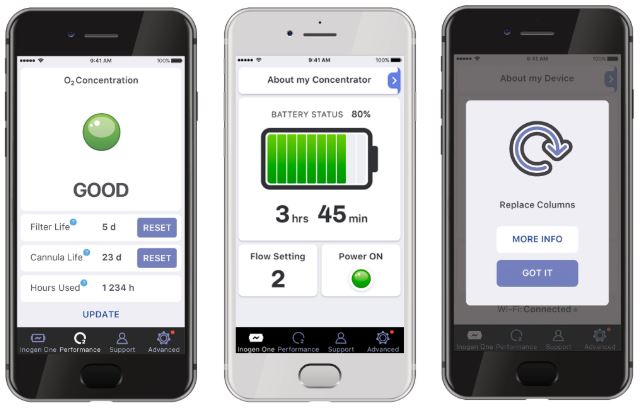
In the grand scheme of things, telehealth is a pretty new concept. However, oxygen companies like Inogen Inc. and Caire Inc. are taking steps to make these services more widely available to oxygen users all over the world. Telehealth services have proven especially useful in ensuring that everyone’s health is accounted for even given the current circumstances. If you’d like to learn more about telehealth services and how they’re improving the lives of COPD patients, check out this blog post.
{{cta('b59df0c1-c4de-47a8-8e1c-0d33d4b414aa','justifycenter')}}
Conclusion
Choosing the right oxygen concentrator is not always easy. Everyone has different wants and needs, so it’s impossible to provide a one size fits all solution and call it a day. If you’re just beginning your search, it’s imperative that you speak with your doctor or pulmonologist to see exactly how much oxygen you need and how often you need to use it.
Once this is done, you can start researching oxygen companies and retailers to determine which one is the most dependable. Be aware that you need to have a prescription from your doctor in order to purchase any type of oxygen device, so if you’re offered a “cheap” oxygen concentrator without providing proof of oxygen use, it’s likely a scam.
If you’re still having trouble finding the right oxygen concentrator, don’t be afraid to reach out to our respiratory specialists here at LPT Medical. We’ll walk you through all of your options ensuring that both your medical needs and your personal preferences are taken into account. To get started, simply fill out the contact form at the side of the page and we’ll reach out to you.

